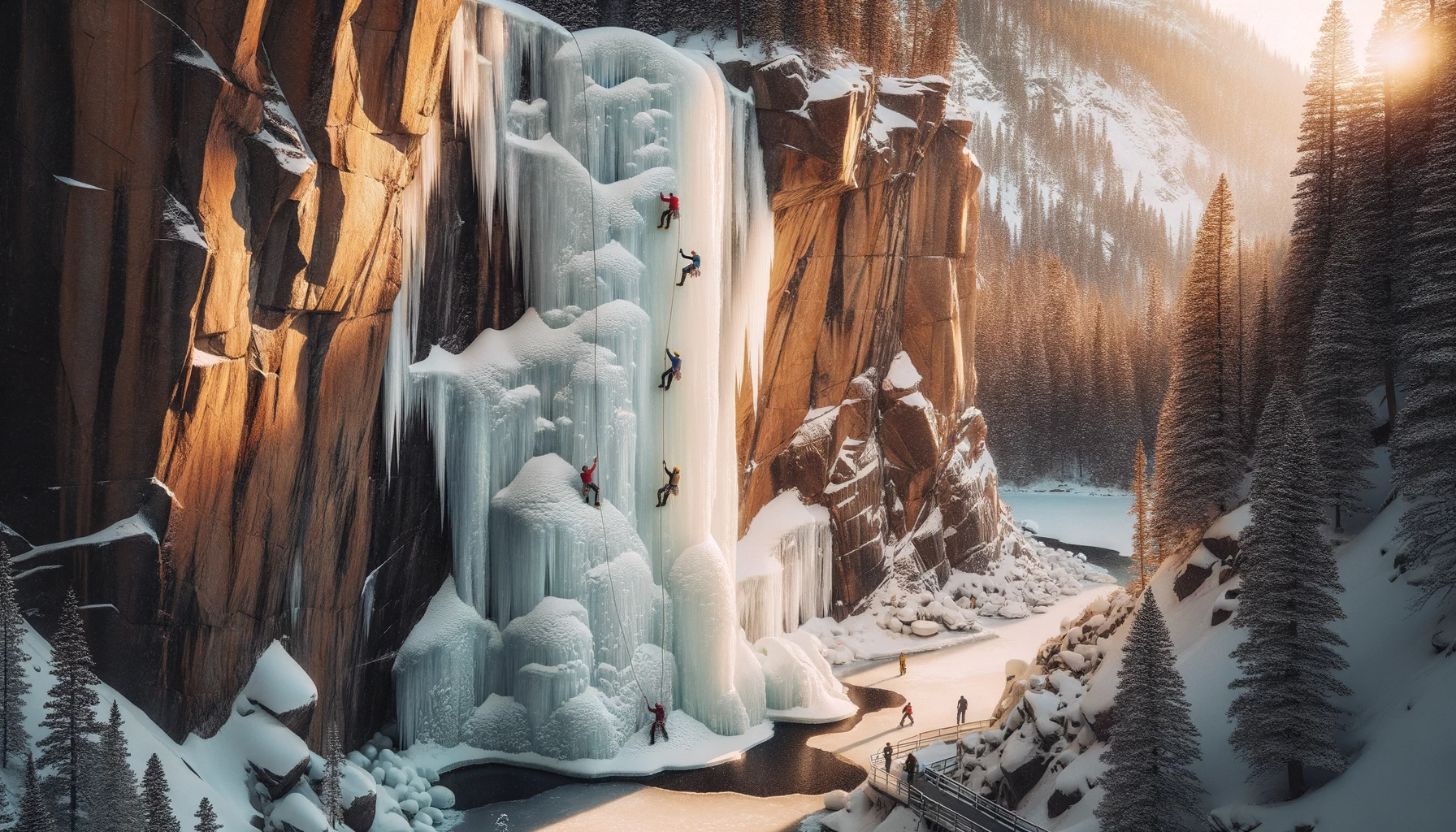Are you looking for a thrilling outdoor activity that challenges both your body and mind? Then rock climbing may be just what you need! Whether you’re a complete beginner or have some experience under your belt, this beginner’s guide to rock climbing will help you get started on your climbing journey. From choosing the right gear to mastering essential techniques, we’ll guide you through the basics of this exhilarating sport.
Get ready to discover a whole new world of adventure as we take you through the essentials of rock climbing for beginners. With the right tools and knowledge, you’ll soon be on your way to scaling heights and experiencing the rush of climbing.
Key Takeaways
- Rock climbing is an exciting adventure sport that can challenge both your body and mind.
- This beginner’s guide will help you get started on your rock climbing journey.
- Essential gear, techniques, safety tips and classes are covered in this guide.
- There are plenty of beginner-friendly climbing locations and classes available to help you get started.
- With a positive mindset and the right training, you can overcome challenges and stay motivated on your rock climbing journey.
Why Rock Climbing?
Rock climbing is an incredible adventure sport for beginners. Not only does it offer an adrenaline rush and a sense of accomplishment, but it can also improve your physical and mental health. Climbing challenges your strength, balance, and flexibility while also requiring problem-solving skills and focus.
Another reason to start rock climbing is the breathtaking views you’ll experience. As you ascend to new heights, you’ll see the world from a new perspective and appreciate the beauty of nature.
Disclosure: When you buy through links on our site, we may earn an affiliate commission.
If you’re wondering how to start rock climbing, don’t worry. You don’t have to be a super athlete to get started. There are climbing routes and locations suitable for all skill levels, and you can always take classes or climb with a partner to learn the proper techniques and safety measures.
So, are you ready to start your rock climbing adventure?
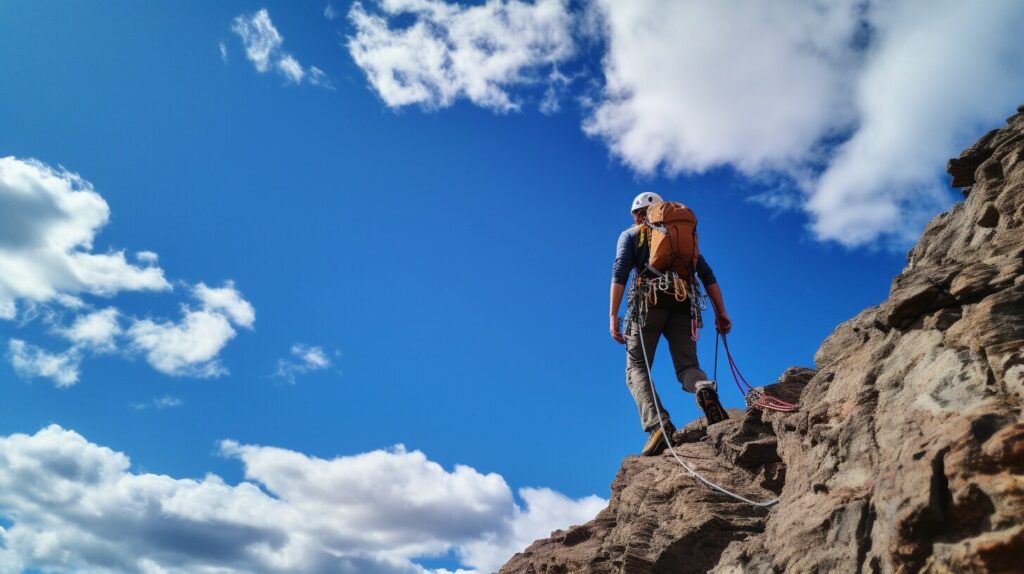
Essential Gear for Beginner Rock Climbers
Rock climbing requires some specialized gear to ensure your safety and enjoyment of the sport. As a beginner, it’s important to invest in quality equipment that fits properly and is appropriate for your climbing level. Here are some essential gear items every beginner rock climber should have:
| Item | Description |
|---|---|
| Rock climbing shoes | Your shoes should provide a snug fit and have a sticky rubber sole for optimal grip on the rock surface. Avoid wearing regular sneakers or hiking boots, as they lack the necessary flexibility and precision. |
| Climbing harness | Your harness should fit comfortably around your waist and thighs and have multiple gear loops for attaching carabiners and other equipment. It’s also important to learn how to properly adjust and use your harness with a rope. |
| Climbing ropes | There are two types of ropes commonly used in rock climbing: dynamic and static. Dynamic ropes are designed to stretch to absorb the impact of a fall, while static ropes do not stretch and are used for anchoring and rappelling. As a beginner, you will likely use dynamic ropes for top rope climbing. |
| Climbing helmet | A helmet protects your head from potential rockfall or other hazards while climbing. Look for a helmet with a snug fit and ventilation to prevent overheating. |
| Climbing carabiners and quickdraws | Carabiners are used to connect ropes and other gear, while quickdraws are used to clip the rope into bolts or anchors. Make sure to use proper techniques when clipping and unclipping carabiners to avoid accidents. |
| Chalk bag and chalk | Chalk helps absorb sweat and keep your hands dry for better grip. A chalk bag is a small pouch that attaches to your harness and holds the chalk. |
It’s essential to check your gear before each climb to ensure everything is properly fastened and secure. You should also use gear that is well-maintained and has not exceeded its recommended lifespan. By investing in quality gear and taking proper care of it, you can enjoy a safe and enjoyable climbing experience.
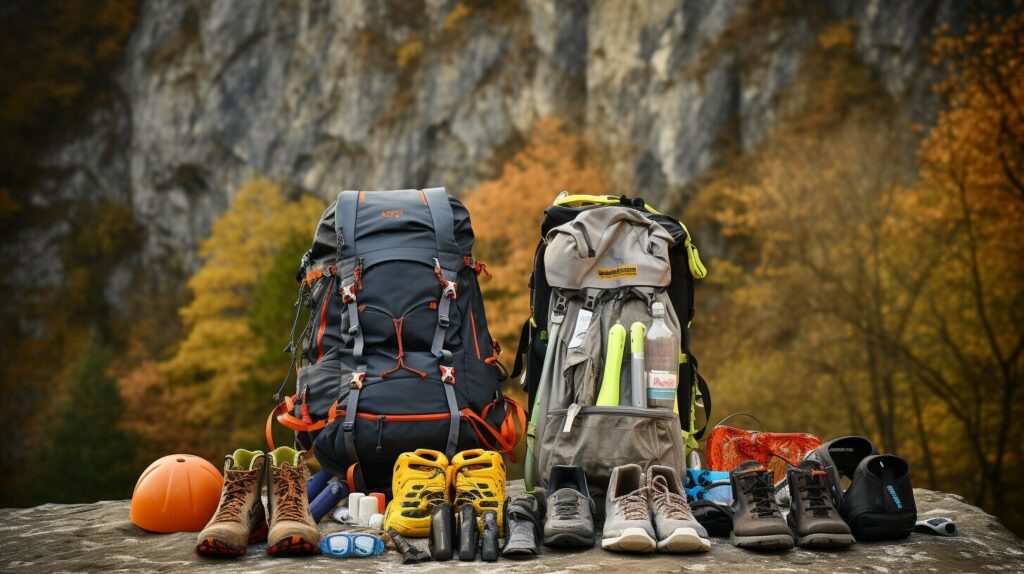
Essential Techniques for Beginner Climbers
Mastering the art of rock climbing doesn’t happen overnight. Beginners should focus on learning and practicing proper climbing techniques to ensure a safe, efficient, and enjoyable experience. Here are some of the best climbing techniques that beginners should strive to perfect:
- Body positioning: Proper body positioning is essential for effective climbing. Focus on keeping your weight close to the wall to prevent swinging and conserve energy. Keep your hips squared to the wall and try to maintain a straight line from your hips to your ankles.
- Footwork: Good footwork is crucial for maintaining balance and stability while climbing. Keep your feet pointed directly at the wall and use the inside edge of your shoe for better grip. Place your feet deliberately and avoid stepping on small holds with the tips of your toes.
- Handholds: Knowing how to use different types of handholds is key to successful climbing. Use open-handed grips for larger holds and crimping grips for smaller holds. Keep your elbows slightly bent to avoid locking out your arms and conserve energy.
- Balance: Maintaining proper balance is essential for efficient climbing. Try to distribute your weight evenly between your hands and feet and use your body to counterbalance as you move between holds. Keep your center of gravity over your hips to prevent tipping forward or backward.
Remember, these are just a few of the many climbing techniques you will learn and master as you progress. Don’t be discouraged if you struggle to implement these techniques at first- climbing takes practice, patience, and determination.
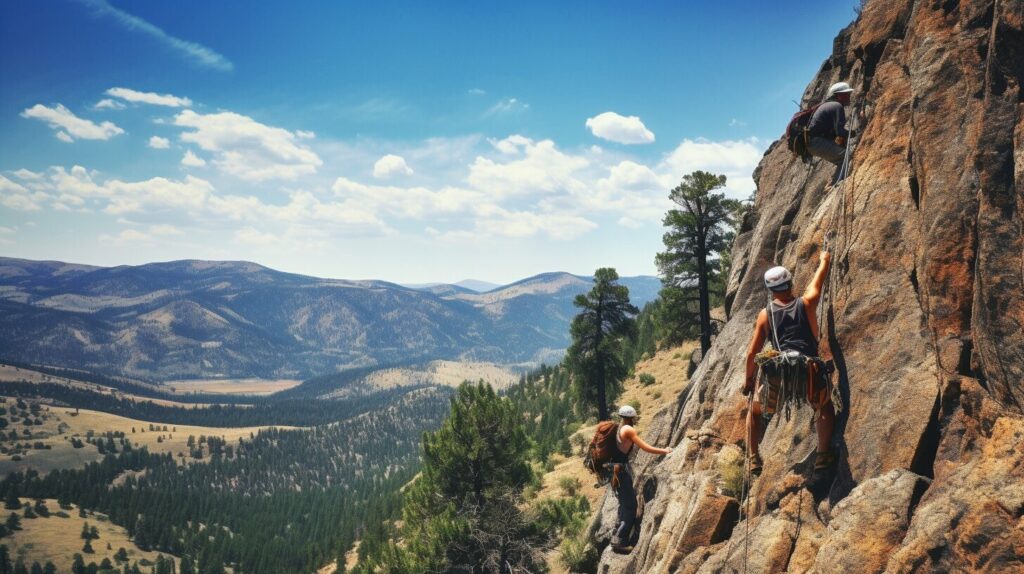
“Climbing is a great workout, a mental challenge, and an adventure – all in one.” – Unknown
Safety Tips for Beginner Climbers
Rock climbing can be a thrilling and rewarding sport, but safety should always be your top priority. As a beginner climber, it’s essential to understand and follow safety guidelines to ensure a safe and enjoyable climbing experience. Here are some safety tips for beginner climbers:
- Always climb with a partner: Climbing with a partner provides an additional level of safety and helps ensure that you have someone to assist you if you encounter any problems. Make sure to choose a partner who is also an experienced climber and understands the importance of safety.
- Use proper equipment: Before you start climbing, make sure you have the right equipment. This includes a harness, climbing shoes, a helmet, a belay device, locking carabiners, and ropes, as well as any other equipment recommended by your climbing location or instructor. Check the equipment regularly and replace any worn or damaged gear.
- Understand the climbing route: Before you start climbing, take time to study the route and identify any potential risks or hazards. Make sure you understand the climbing ratings and choose a route that matches your skill level. Start with easier routes and gradually work your way up as you gain experience.
- Properly belay: Belaying is an essential safety technique in rock climbing. Make sure you understand and practice proper belaying techniques before you start climbing. Always double-check your knots and your partner’s knots, and communicate clearly throughout the climb.
- Know your limits: Pushing yourself is an important part of improving in rock climbing, but it’s also important to know your limits. If you feel uncomfortable or unsafe at any point during a climb, don’t hesitate to stop and reassess the situation.
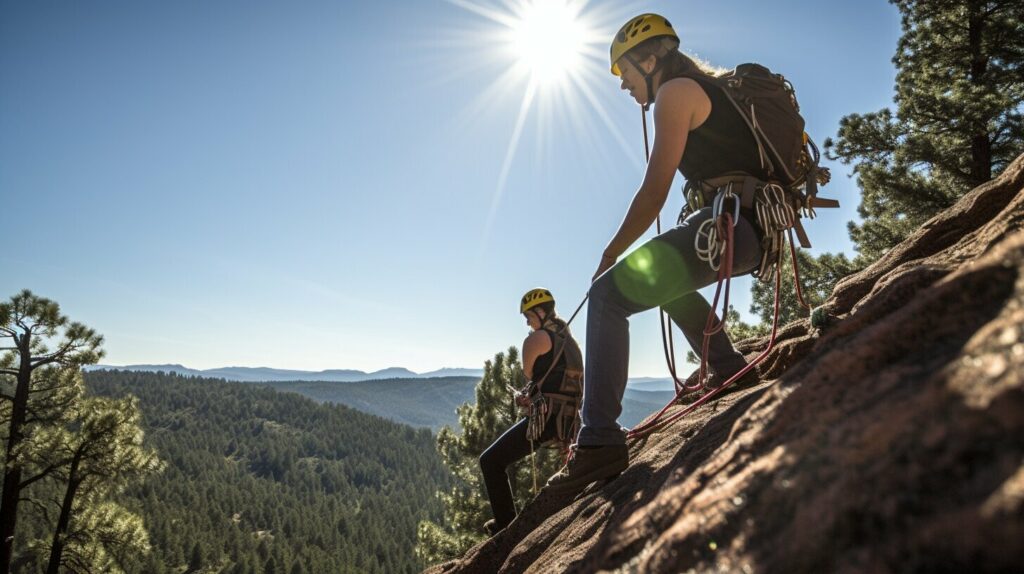
Remember, safety is key in rock climbing. By following these safety tips and guidelines, you can enjoy a safe and rewarding climbing experience.
Beginner-Friendly Rock Climbing Locations
As a beginner, choosing the right rock climbing location is crucial. It can greatly affect your experience, learning curve, and overall enjoyment of the sport. Here are some beginner-friendly rock climbing destinations that offer a variety of routes suitable for climbers at different skill levels:
- Joshua Tree National Park: Home to over 8,000 climbing routes, Joshua Tree is a popular destination for beginners and experienced climbers alike. With a range of routes from easy to challenging, this park offers plenty of opportunities to improve your skills.
- Squamish, British Columbia: Known as the “Outdoor Capital of Canada,” Squamish offers breathtaking views and a lively climbing community. With over 2,000 climbing routes, climbers of all skill levels can find something to suit their abilities.
- Smith Rock State Park: Located in Oregon, Smith Rock is a favorite among beginners due to its easy-to-access top-rope routes and supportive atmosphere. The park also offers climbing classes and clinics for those who want to improve their skills.
Remember to always research and prepare before heading to any climbing destination, and follow safety guidelines to ensure a safe and successful climb.
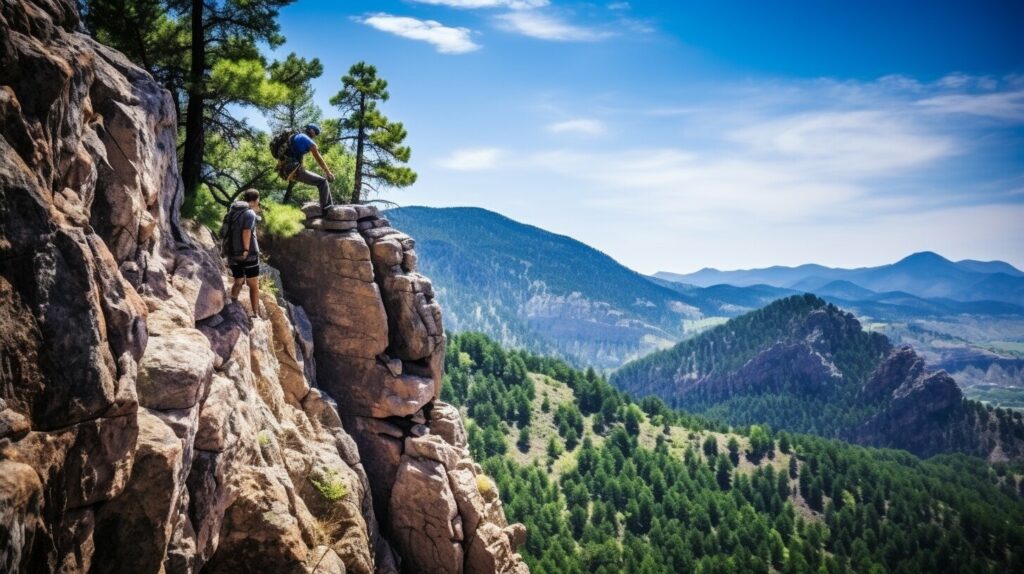
Beginner Rock Climbing Classes
If you’re looking for a more structured approach to learning rock climbing, taking classes can be a great option. There are rock climbing classes specifically designed for beginners, which provide step-by-step lessons and guided instruction. These classes can accelerate your learning and progress, helping you gain confidence and skills faster.
To find rock climbing classes for beginners, search online or check with your local climbing gym. Many gyms offer beginner-level classes that cover the basics, such as proper belaying techniques, gear usage, basic climbing terminology, and safety tips. Some gyms also offer outdoor climbing excursions or multi-day clinics to help you apply the skills you’ve learned in a real-world setting.
Rock climbing classes for beginners are a great way to learn the sport in a safe and controlled environment. With a qualified instructor guiding you every step of the way, you can learn proper techniques and essential skills that will set you on the path to becoming a proficient climber. Whether you’re looking to climb for recreation or competition, taking classes can help you achieve your goals.
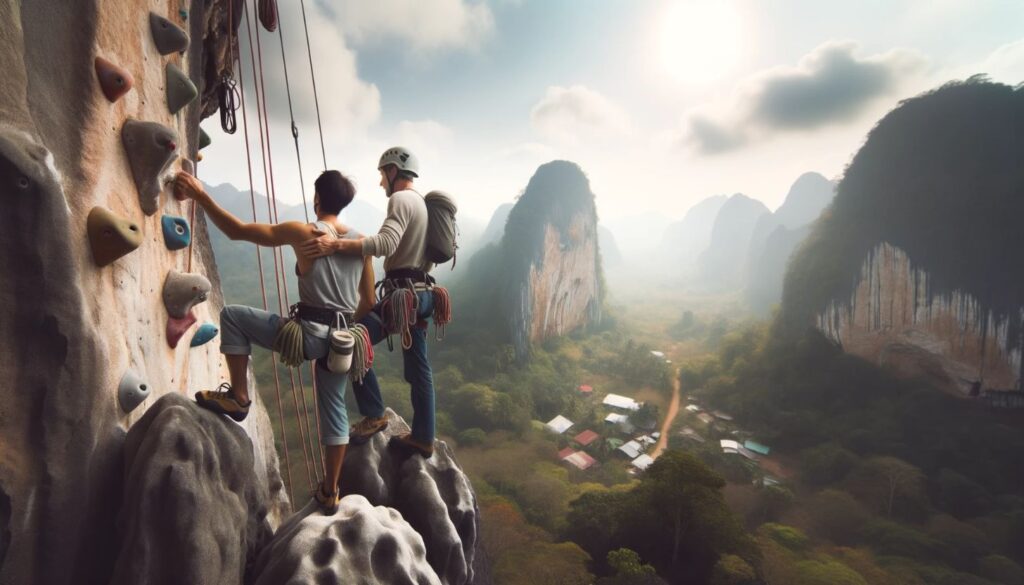
Remember that rock climbing can be a dangerous sport, and proper instruction and safety measures are essential. When choosing a rock climbing class or instructor, look for someone who has experience and qualifications in the sport. It’s also important to listen to their guidance and follow safety protocols at all times. With the right instruction and practice, you can become a confident and skilled rock climber.
Building Strength and Fitness for Climbing
If you want to become a successful rock climber, it’s important to build your strength and fitness in a targeted way. Climbing requires a unique set of physical abilities, including grip strength, core stability, and endurance. Incorporating specific exercises and training techniques into your routine can help you develop the necessary skills to excel in the sport.
Strength Training
One of the best ways to build strength for climbing is through weight training. Exercises that target your upper body, back, and core will help you build the strength and endurance needed to climb with ease. Some effective exercises include pull-ups, push-ups, rows, and squats. Try incorporating these into your workout routine several times a week to start.
You may also want to consider using a hangboard, a tool that can help you build finger strength – a crucial component of successful climbing. Practice hanging from the board for increasing amounts of time, using various grips and hand positions to develop your finger strength and grip endurance.
Flexibility and Mobility
Flexibility and mobility are also essential elements of rock climbing. You need to have the flexibility to reach high holds and make dynamic movements, while also being able to move your body smoothly, without restriction. Incorporating stretching and mobility exercises into your routine can help you develop better flexibility and mobility.
Specific stretches that can be helpful for climbers include shoulder stretches, hip openers, and hamstring stretches. Additionally, yoga can be an excellent way to develop flexibility and mobility, as it targets the entire body and emphasizes controlled, fluid movements.
Aerobic and Anaerobic Training
Finally, it’s important to train your body for the specific demands of climbing. Climbing requires both aerobic and anaerobic fitness, meaning you need to have both endurance and explosive power. Training your cardiovascular system through running, cycling, or swimming can help you build better endurance, while high-intensity interval training (HIIT) can help you develop explosive power.
A great way to combine aerobic and anaerobic training is through bouldering, a form of rock climbing that focuses on shorter, more intense routes. Bouldering can help you build strength, endurance, and power all at once, making it an ideal training activity for climbers of all levels.
By incorporating strength training, flexibility and mobility work, and targeted aerobic and anaerobic training into your routine, you can become a stronger, more capable rock climber. Remember to start slow, listen to your body, and progress gradually to avoid injury and burnout.
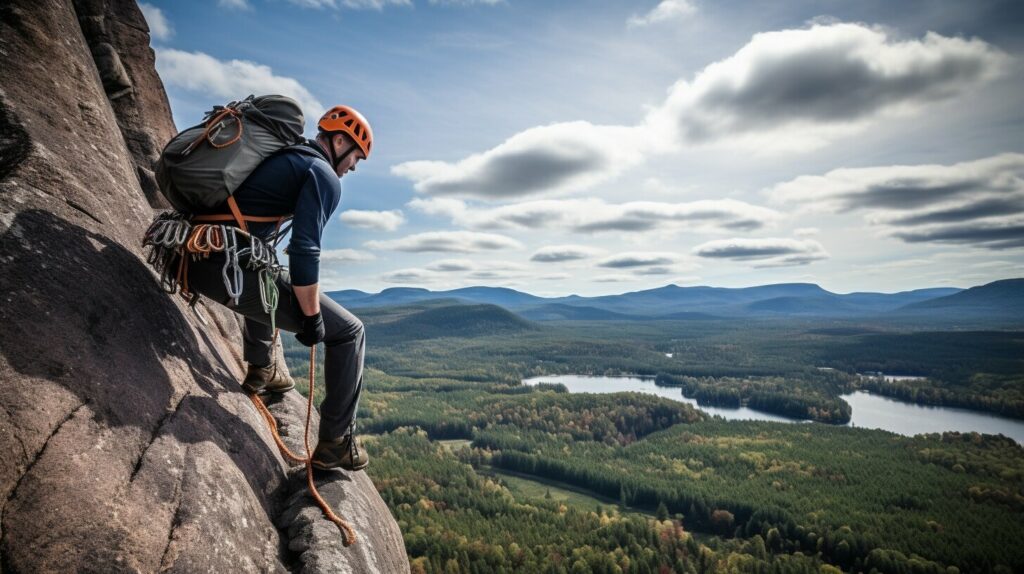
Tips for Beginner Climbers
As a beginner climber, you may encounter challenges along the way. Whether it’s fear of heights or difficulty with a particular route, it’s important to approach these obstacles with a positive attitude and a willingness to learn. Here are some tips to help you overcome challenges and stay motivated:
- Set achievable goals: Rather than focusing on the end goal of reaching the summit, set smaller, more realistic goals along the way. Celebrating small victories will help boost your confidence and keep you motivated.
- Stay calm: When facing a difficult climb, it’s easy to become overwhelmed or anxious. Focus on your breathing and stay present in the moment to maintain a sense of calm and control.
- Learn from your mistakes: Don’t be discouraged by mistakes or failures. Instead, use them as opportunities to learn and improve your technique.
- Seek support: Climbing with a supportive partner or group can provide encouragement, feedback, and inspiration. Don’t be afraid to ask for help or advice.
Remember, every climb is a learning experience, and setbacks are a natural part of the process. By approaching challenges with a positive mindset and a willingness to learn, you can overcome obstacles and achieve your goals as a climber.
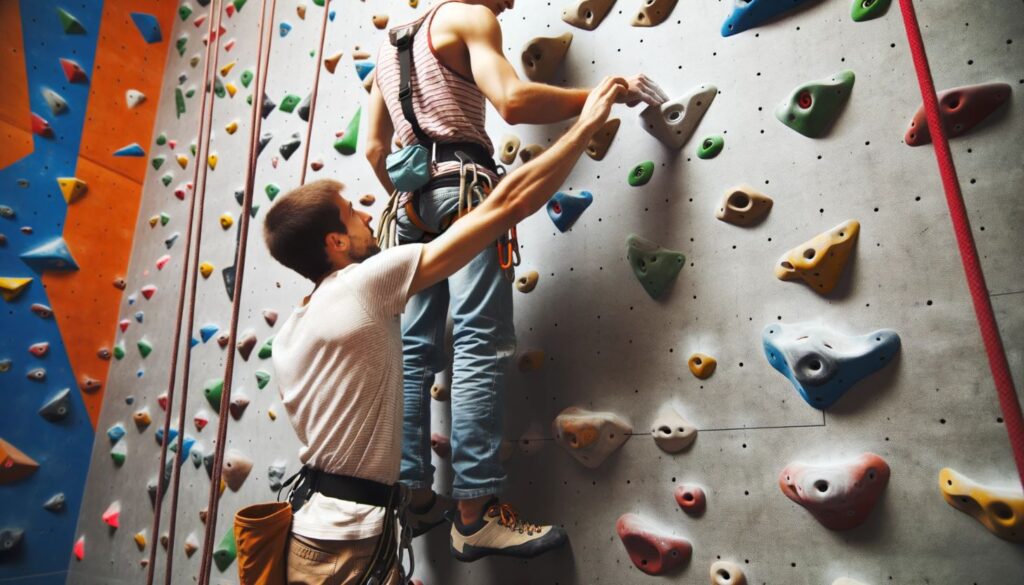
Conclusion
Thank you for following our guide to rock climbing for beginners. We hope this comprehensive resource has inspired you to start your own climbing journey. Remember, with the right gear, techniques, and mindset, you can conquer heights and experience the thrill of rock climbing.
Starting your rock climbing adventure is easy. Here are some simple steps you can take to get started:
Find a Climbing Gym
The best way to get started with rock climbing is to find a local climbing gym near you. Climbing gyms offer a safe and controlled environment to learn the basics and practice your skills. You can also meet other climbers and get advice on gear and techniques.
Take a Beginner’s Class
If you’re new to climbing, it’s a good idea to take a beginner’s class. These classes are designed to teach you the basics of climbing, including safety, equipment, and technique. You can also learn how to belay and climb with a partner.
Get the Right Gear
Having the right gear is essential for a safe and enjoyable climbing experience. Make sure you invest in a good pair of climbing shoes, a harness, a helmet, and a chalk bag. You may also want to purchase your own climbing rope and carabiners if you plan to climb outdoors.
Practice
The more you practice, the better you will become at climbing. Try to climb at least once a week, and focus on improving your technique and building your strength. You can also climb with a partner or join a climbing group to stay motivated and get feedback on your progress.
With these steps, you can start your rock climbing journey today. Whether you climb indoors or outdoors, remember to always put safety first and have fun!
FAQ
What is rock climbing?
Rock climbing is a sport that involves scaling rock formations using your hands and feet. It requires physical strength, mental focus, and climbing techniques to ascend to new heights.
Is rock climbing safe for beginners?
Rock climbing can be safe for beginners if proper safety measures are followed. It is important to receive proper training, use appropriate gear, and climb with experienced partners or under the guidance of an instructor.
Do I need any prior experience to start rock climbing?
No, you don’t need any prior experience to start rock climbing. Many climbing gyms and outdoor centers offer beginner-friendly routes and classes designed specifically for those who are new to the sport.
What gear do I need to start rock climbing?
The essential gear for rock climbing includes climbing shoes, a harness, a helmet, carabiners, belay devices, and a chalk bag. These items help ensure your safety and enhance your climbing experience.
How do I choose the right climbing shoes?
When choosing climbing shoes, it’s important to consider factors such as fit, comfort, type of climbing you plan to do, and your skill level. It’s recommended to try on different shoes and consult with experienced climbers or gear experts for guidance.
What are some beginner-friendly rock climbing locations?
Some beginner-friendly rock climbing locations include Joshua Tree National Park in California, Red River Gorge in Kentucky, and Smith Rock State Park in Oregon. These areas offer a variety of routes suitable for climbers at different skill levels.
Are there rock climbing classes available for beginners?
Yes, there are rock climbing classes available specifically designed for beginners. These classes provide step-by-step instruction, safety training, and hands-on practice to help you learn the basics of rock climbing in a structured and supportive environment.
What are some tips for staying motivated in rock climbing?
To stay motivated in rock climbing, it’s important to set realistic goals, celebrate your progress, find a supportive climbing community, vary your climbing routine, and challenge yourself with new routes or techniques. Maintaining a positive mindset and embracing the joy of the sport can also help keep you motivated.




